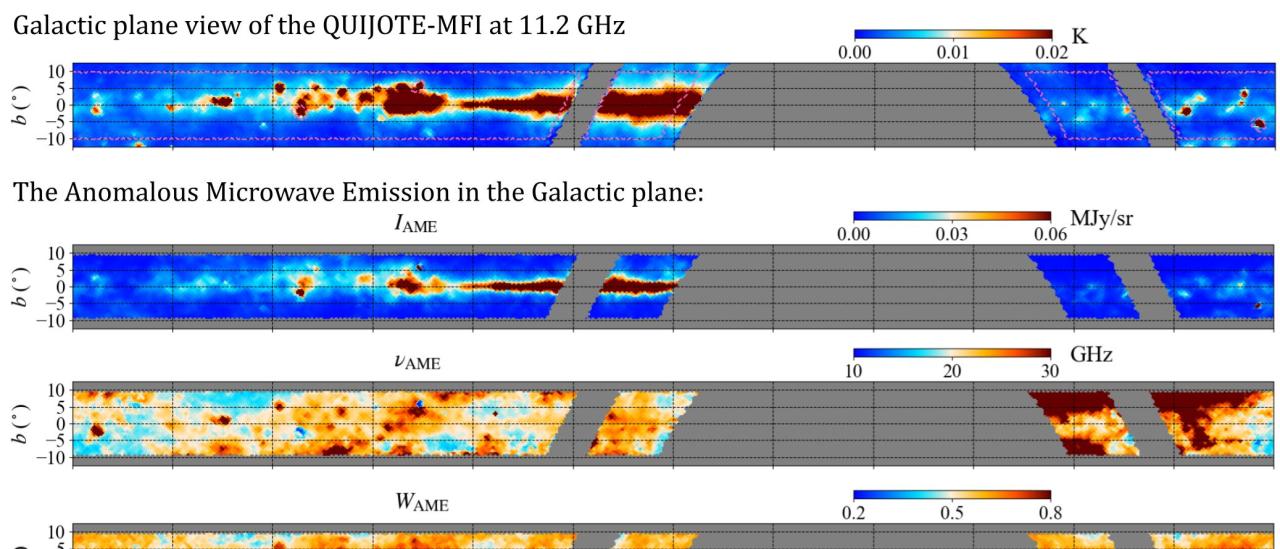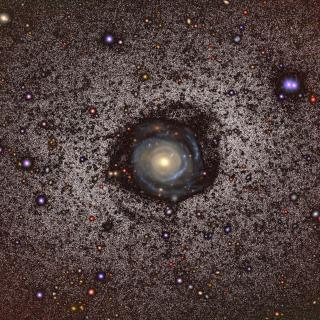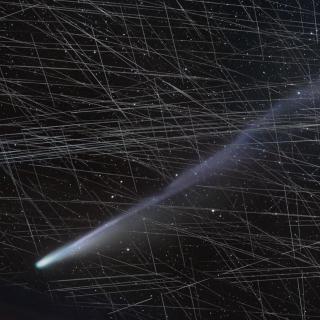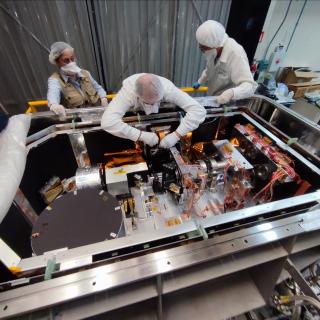In the 90s, the COBE satellite discovered that not all the microwave emission from our Galaxy behaved as expected. Part of this signal was later assigned to a fresh new emission component, spatially correlated with the Galactic dust emission, which showed greater importance in the microwave range of frequencies. It has been named since as “anomalous microwave emission”, or AME. The current main hypothesis to explain the AME origin is that it is emitted by small dust particles which undergo fast spinning movements.
In Fernández-Torreiro et al. (2023), we study the observational properties of the AME diffuse emission along our Galactic plane. This analysis is one of the set of results associated to the data provided by the North sky survey by the MFI (Multi-Frequency Instrument) instrument installed at the QUIJOTE experiment (Q-U-I JOint Tenerife Experiment). The first six articles were already published at the beginning of 2023 together with the public release of the data to all the scientific community. Because of the maps frequencies covering between 10 and 20 GHz we can recover the AME spectrum better than before. This allows for a finer separation between the AME and the other components important at low frequencies, such as the synchrotron and the free-free. We present a separation in 10 maps which describe the emission mechanisms present in our Galaxy between radio and far-infrared frequencies (0.4-3000 GHz). Regarding the AME, we detect spatial variations of its characteristic emitting frequency, although the significance of these variations is limited. We also show correlations between the AME parameters and those from the rest of emission components, with special emphasis on the thermal dust emission, as the two have shown historically an important spatial correlation. The comparison between thermal and spinning (AME) dust emissions allows us to know in greater detail the AME. For example, we are able to limit the expected size for the dust grains responsible for the AME; or to study the relation between the AME and the interstellar radiation field in the area.
A similar methodology has been used to study the Galactic sources in the same wide survey obtained with the QUIJOTE-MFI. In López-Caraballo et al. (2024) we present the characterization of the synchrotron emission in six supernova remnants of our Galaxy: CTB 80, Cygnus Loop, HB 21, CTA 1, Tycho and HB 9. Observational properties in intensity and polarization have been recovered from their respective spectra, with the spectral index being one of the properties of great interest. We have confirmed that the CTB 80 and HB 21 remnants exhibit a broken synchrotron spectrum, with the spectral change occurring around 2 and 5 GHz, respectively. In addition, these two remnants are the oldest in the sample and show the flatter spectral indices (at low frequencies): -0.24 and -0.34 for CTB 80 y HB21, respectively. Using the full sample, we have demonstrated that the evolution of the spectral index (i.e., the spectral index versus age of each remnant) is consistent with previous works in our Galaxy and the Large Magellanic Cloud. When comparing the spectra of remnants in intensity and polarization, we recovered polarization levels of up to 10%, with an average of 6.1% for the whole sample. In an ideal case, these polarization measurements provide a constraint on the turbulent component of the magnetic field in each region. Finally, we have placed strong constraints which disfavour the presence of AME in the remnants. This suggests that the detection of AME in other supernova remnants (such as W44, W49 and W51) is associated with an overlap along the line of sight between the remnants and other regions with different emission mechanisms.
Finally, in Fernández-Torreiro et al. (2024) we addressed if AME was present in the Andromeda galaxy (M31), our Local Group neighbour. An AME component in M31 was already proposed by a couple of previous works, but AME measurements outside our Galaxy continue to be extremely scarce. Together with the M31 detection, an AME component has been detected only for two other extragalactic sources. Because of the lower signal from M31 when compared to that from our Galaxy, we were required to use a larger amount of data. In total, we used more than 500 hours of observations from QUIJOTE-MFI centred on M31. We obtained a significant detection of AME from this analysis; besides, this AME is found to behave similarly to how it does on the Milky Way. This result suggests that the AME and its behaviour are common to different galaxies in our Universe, and encourages repeating this kind of analysis for further objects at larger cosmological distances.
References:
- Fernández-Torreiro et al. 2023, MNRAS, 526, 1, pp.1343-1366
- López-Caraballo et al. 2024, MNRAS, 527, 1, pp.171-204
- Fernández-Torreiro et al. 2024, MNRAS, 527, 4, pp.11945-11961



